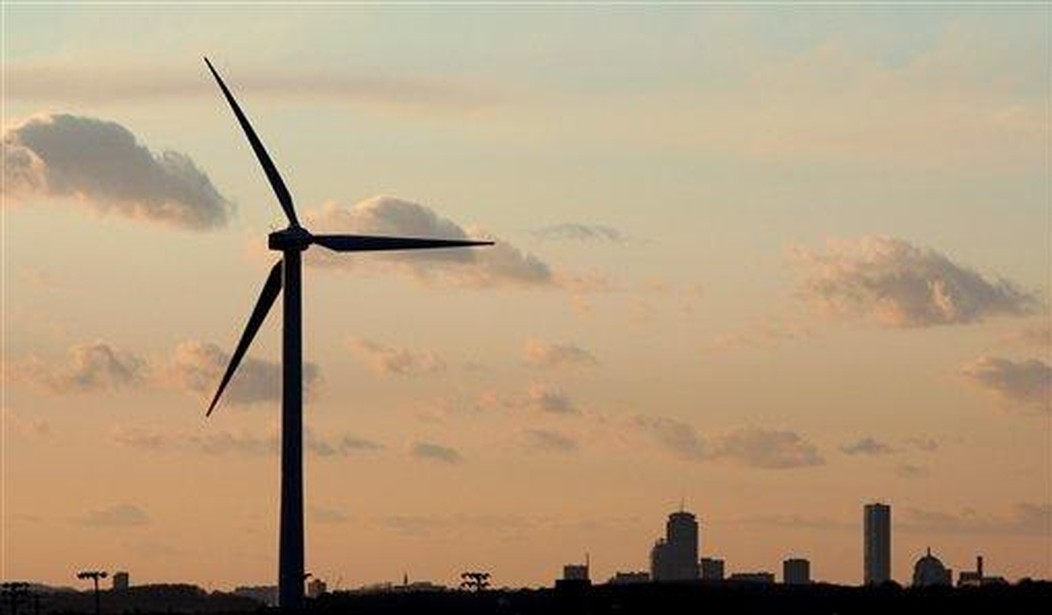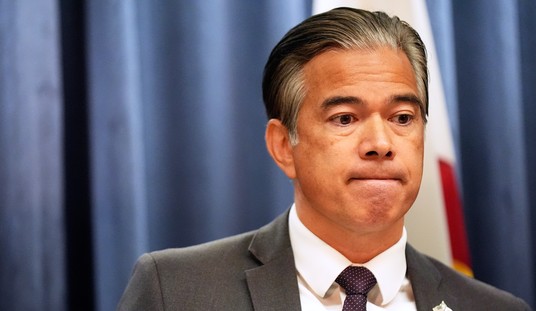For all the Green dreamers and shrieking climate cultists on Earth do to mandate, cajole, and bribe the populace and industries into following them over a climate change cliff, every day there are more and more signs it’s going to be a massive – and heartwarming – bust of epic proportions.
The auguries of change are all around us – we only have to know where to look. Now, I’m no Delphic oracle (I only play one at HotAir), but I will be glad to continue giving you the puzzle pieces pointing to wind’s future, and we’ll see if it works out the way I hope.
For instance, two days ago the U.S government held its first offshore wind auction for parcels in the Gulf of Mexico. There was one winning bid.
In fact, that was the ONLY bid.
First offshore wind auction in Gulf of Mexico attracts one winning bid
Lease sale results show meager interest in wind energy development in US GoM
The Biden administration’s first-ever auction of offshore wind development rights in the Gulf of Mexico ended with a single $5.6-million winning bid on Tuesday, reflecting meager demand for the clean energy source in a region known for its oil and gas production.
Germany’s RWE won rights to 102,480 acres (41,472 hectares) off Louisiana for $5.6 million, while the other two lease areas on offer off Texas received no bids, according to results posted on the Bureau of Ocean Energy Management website.
RWE’s awarded site is 44 miles off the coast of Louisiana and has water depths of 10-25 meters. The company said that the lease area has the potential to host up to 2 GW of new capacity, enough to power over 350,000 US homes with clean energy. The project is expected to be in operation by the mid-2030s, contingent upon permitting timelines.
YOICKS
The leased area can provide up to 2GW of capacity, huh? How big an area are we talking about?
2 GW on 102,480 acres… 51,240 acres per GW.
That’s insanity. WattsUpWithThat does the acreage comparison per GW with an up and running power station in Lake Charles, Louisiana. The wind is out of sight times more expensive, demonstrably less reliant, and markedly less efficient. What a grift.
• Lake Charles Power Station: 100 acres per GW
• Lake Charles Offshore Wind: 51,240 acres per GWCapacity Factor: Offshore Wind Loses
The Lake Charles Power Station is almost brand new. It went into operation in March 2020. It cost $872 million ($0.87/MW), including transmission and other related costs. Since entering service, it’s operational capacity factor has averaged 62% (30-40% during low demand periods and 75-85% during high demand periods).
The generic capacity factor for offshore wind is estimated to be 44%. Of course, this isn’t driven by demand. It’s literally driven by the wind. In the Gulf of Mexico there are generally two types of wind: 1) light breezes and 2) hurricanes. 44% might not be achievable in the Gulf.
After 3 years in service, they’ve already gotten the capital cost for the Lake Charles plant down to $50MW, where the price tag for the offshore farm is over $100MW by the END of its projected 30 years in service, calculated at the 44% efficiency they’d better be praying for. They’d also better have a New Orleans voodoo queen on staff to ward off hurricanes. A single one could shoot that number into the stratosphere.
In other news, there was a one-two punch yesterday for one of my favorites villains, Danish wind giant Ørsted. They reported they were having some difficulties which drove their stock price down 25%.
I will say that as an energy professional, the nearly total blindness of many of my colleagues to the extremely high cost of North American offshore wind, especially in light of its mediocre energy system value, is a continuing annoyance.
Perhaps this will get their attention
— Mark Nelson (@energybants) August 31, 2023
Then their own government’s CLIMATE committee (!) went and did them even dirtier. In what can only be seen as a huge reversal of policy, it was announced they would be creating a subcommittee on the much-reviled “nuclear energy,” and schedule hearings.
Oh, the humanity.
DANMARK GETS A NUCLEAR HEARING!
Danish Climate Commitee have decided to create a subcommitee on nuclear power in Denmark!
They will be responsible for executing a hearing about nuclear power’s potential in Denmark! https://t.co/WfdsXmZg90
— Johan Christian Sollid (@sollidnuclear) August 31, 2023
And there was much rejoicing.
But back to Ørsted’s financial woes – there was some very interesting news buried in the litany of inflation, materials, etc., snafus that were taking a massive toll on the company’s bottom line. There was the CEO’s outright threat that if they don’t get more monies from the feds (or as federal money is known: you and me) they’ll take their turbines and go home.
I have developed a bad case of “don’t let a blade hit you in the asterisk as you leave” in answer to that.
Green energy enthusiasts’ dreams of hundreds of giant windmills off the coasts of the United States took another hit Wednesday when the world’s largest producer of the required turbines reported steep losses and warned of “severe” setbacks in its American operations.
The Danish firm, Orsted, which also operates wind farms in Britain’s North Sea, said it may be forced to take a $2.3 billion hit on its U.S. portfolio because of snarls in the supply chain, rising interest rates, and slowing taxpayer subsidies from the Biden administration.
The company’s chief executive, Mads Nipper, told analysts on a conference call following its announcement that it may be forced to abandon its eight nascent projects off the shores of New York, Rhode Island, Connecticut, Maryland, and New Jersey. There are currently only two functioning offshore wind farms in America, off the coasts of Rhode Island and Virginia; Orsted owns and operates the Rhode Island farm.
“If the walk-away scenario is the economical, rational decision for us, then this remains a real scenario for us as an alternative to actually taking the final investment decision,” Mr. Nipper said. The company lost about 25 percent of its market value on the news Wednesday. Mr. Nipper said the woes faced by his company are exclusive to the American market.
Now, he’s lying through his teeth about the problems being purely exclusive to the American market as far as his material, etc. Yes, to receive US subsidies, 44-55% of the materials have to be made here, by truly difficult union workers with difficult contracts (*waah* – like they’re so much worse than EU labor rules? Give me a freakin’ break.) However, the raw materials these abominations are constructed of are expensive regardless of where they are manufactured, and European wind manufacturers are whining about the exact same thing. Overall material costs for wind turbines alone are up 38% in the past 2 years.
It’s not the U.S. doing it to you, buddy.
The average price of the seven most significant critical minerals for the wind industry has increased by 93% since January 2020.
…Beyond the steel used to build the tower, the most significant mineral requirements in the wind industry are copper, zinc, manganese, chromium, nickel, molybdenum and rare earths, according to the International Energy Agency.
The price of each of these metals increased significantly between January 2020 and March 2023, ranging from a 23% price increase for zinc to a 285% price increase for molybdenum (which is currently undergoing a “perfect storm” of supply and demand disruptions). The average price increase of these seven metals over the period is 93%.
…These cost increases are pushing up wind developers’ deployment bids and industry experts are calling on European governments to raise ceiling prices for renewable energy auctions in response. Some countries, such as Germany, have started to do so.
GIVE US MORE GOVERNMENT MONEY
It’s a universal Green grifting grab.
There was a cheerful hint that things are swinging around found in a recent Monmouth poll.
The hard fought revolution to counter the deluge of climate change and renewable propaganda is breaking through to people. They do not like what they see. They do not appreciate the lies they have been fed.
…A poll released this week by Monmouth University suggests that just more than half of the state’s residents support offshore wind farms, compared to three-fourths who said they supported them as recently as February. “There was a time when wind energy was not really a political issue,” the director of Monmouth’s Polling Institute, Patrick Murray, said.
“It consistently received widespread bipartisan support for more than a decade. That is no longer the case.”
Now that reality of renewables is landing on their doorsteps along with dead leviathans and frozen winters, they are looking for answers outside the Experts™ who sold them the dreams to begin with.
The very same guys who’ve been here all along, trying to be heard.
They finally can be.








Join the conversation as a VIP Member